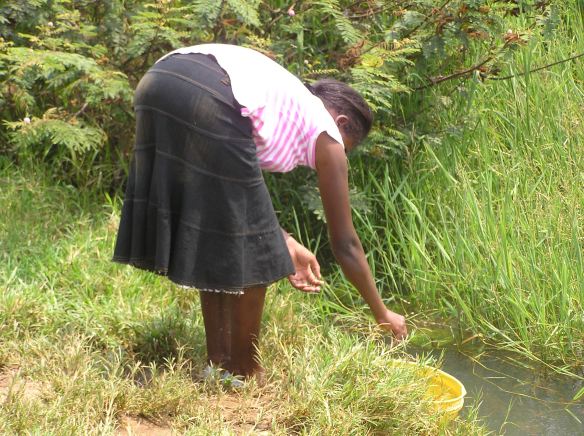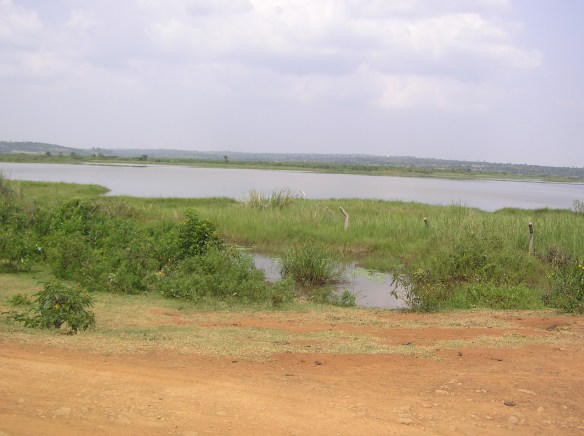Majority of Kenya’s population practices and depends on agriculture. However, as the arable land continues to diminish, swamps and marshes become the target of reclamation for agricultural activity and settlement.
Encroaching on swamps and marshes is done in several ways, first, by planting water intensive tree species like the eucalyptus, second by digging water drainage trenches and third by clearing such areas of any protective vegetative cover, digging these areas up and allowing the elements to vaporize the water.
It is unfortunate the world over, in politics, movies and on TV, swamps are portrayed as dirty, murky places full of hidden danger. That narrative has got to change if the wetlands protection campaign is to make gainful strides.

Nile Basin: Breathtaking sunrise over marshland in Kitale, Nzoia River water catchment – Photo Sande Olocho 2018
Whereas the forested areas, national parks, marine parks and game reserves are protected under stringent laws, the same cannot be said of wetlands. Even though decent attempts have been made in this endeavor; wetlands in Kenya remain under serious threat of complete obliteration accelerated by human activity and Climate Change. In Kenya, there are several laws that have been enacted with an intention of protecting wetlands and riparian lands. These include the Water Act 2002, Water Resource Management Act 2007, and Environment Management and Coordination Regulations Act 2006.
Lacklustre enforcement of the statutes regarding protection of wetland continues despite the fact that these lungs and kidneys of the ecosystem comprise a negligible 0.11 percent of the country’s land surface area.
Small-scale wetlands destruction has far-reaching effects. As the wetlands disappear, so too do their abilities to recharge groundwater, collect sediment, and trap pollutants. In addition, isolated wetlands often serve as crucial habitat for small populations of rare birds, insects, and amphibians. These pockets of decimation collectively, make up for a significant negative impact on our fragile environment.

Nile Basin: A woman drawing water from the Yala Swamp – Photo Courtesy Water Journalists Africa 2012
As environmentalists and conservationists, we are cognizant of how important the wetlands are in our environmental systems, but the majority of the communities who border these systems are not fully aware of the important role these natural features play. They perceive them as a nuisance instead.
If we are to consider that wetlands are the very springs of the waters we seek to protect, the filters for the pollutants we dump into the environment and the surface water reserves when the weather becomes unpredictable, the importance of wetlands should be highlighted to the communities more deliberately as a way to broaden and deepen the protection of these important natural resources, whether big or small.
Experts opine that nearly two-thirds of the wetlands in the Nile Basin have been destroyed. Wetlands destruction has increased flood and drought damage, nutrient runoff and water pollution, and shoreline erosion, fallen water volumes in rivers and streams, complete drying up of some of the nascent water sources and also triggered a decline in wildlife and general animal populations on both land and water.

A healthy Swamp Photo by Jared Cole 2011
In the village where I grew, the rivers I swam in as a child in Vihiga of Western Kenya are now mere trickles and in some parts look like trodden paths as they have completely dried up. Most of the vegetative bushes and marshland where we grazed the few head of cattle are now small scale farms, eucalyptus tree plantations or homesteads.
If the Nile Basin conservation efforts are to make headway with tangible results in the long run, these efforts must go deeper and emanate from below, the nascent sources of the streams that feed the major influents of Lake Victoria and by extension the Nile River.

Nile Basin: A Section of the Yala Swamp, Photo Courtesy Water Journalists Africa, 2012


You must be logged in to post a comment.